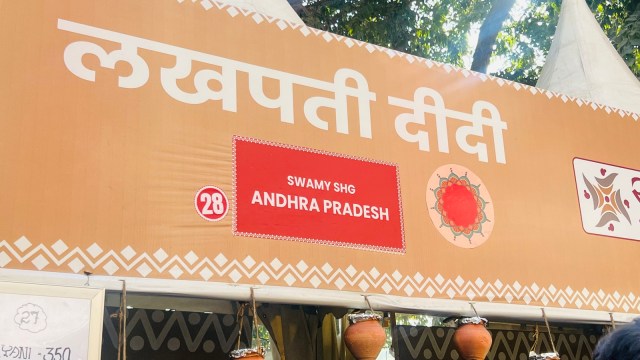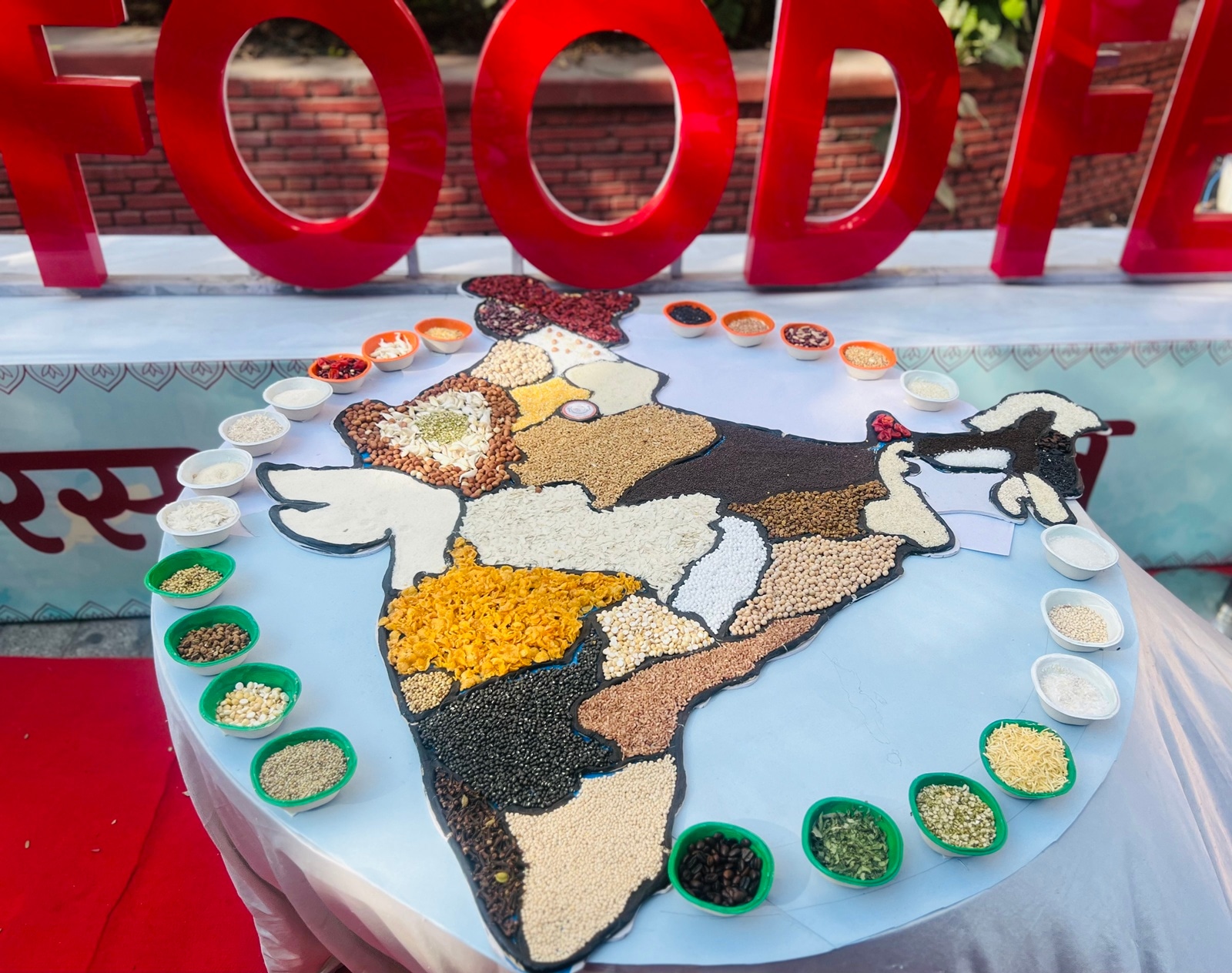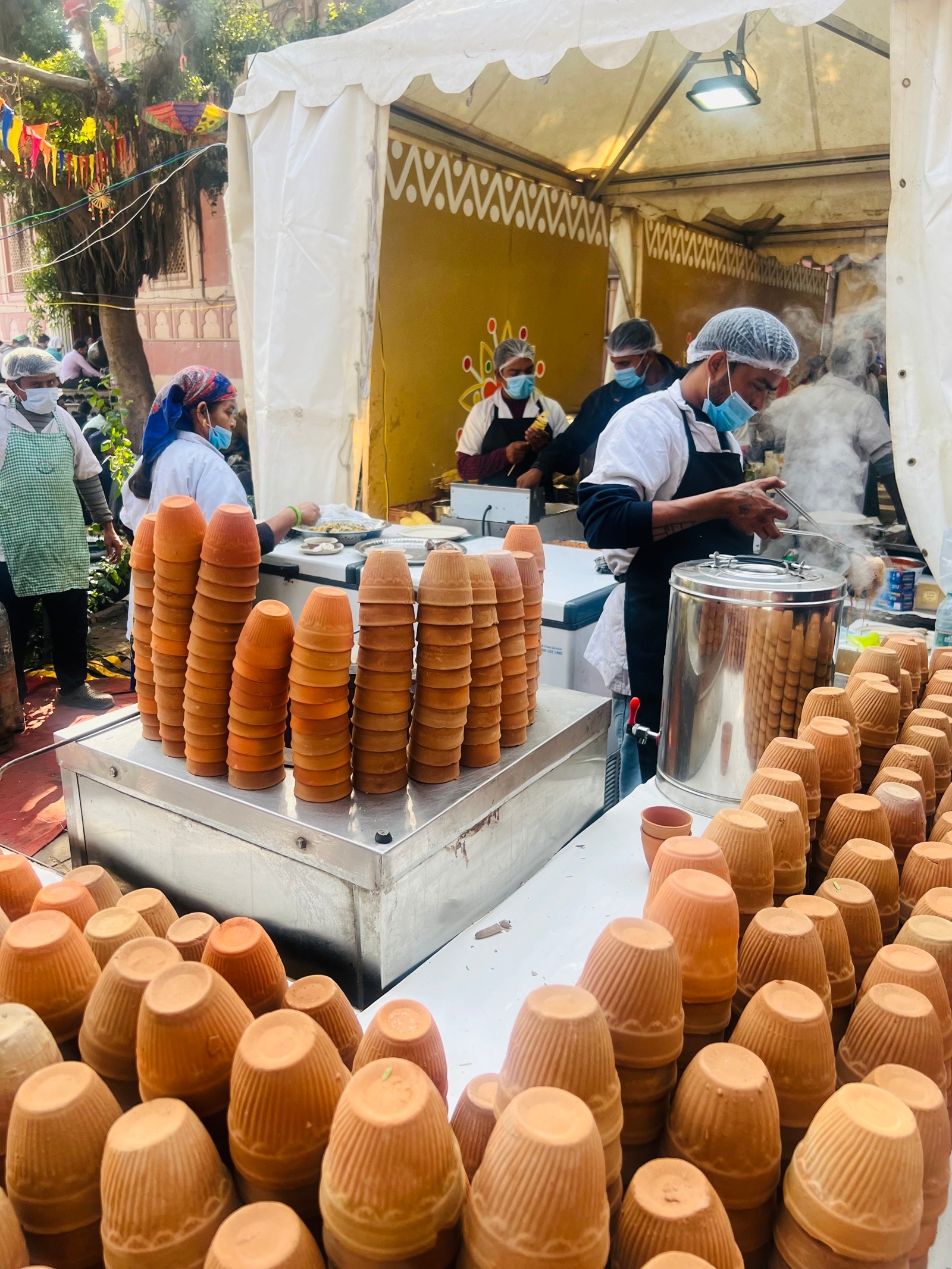📣 For more lifestyle news, click here to join our WhatsApp Channel and also follow us on Instagram
‘Lakhpati didis’ showcase their culinary finesse at the Saras Food Festival 2024
The food festival was a gastronomic journey across India, with traditional recipes, SHG entrepreneurship, and food tourism.
 Lakhpati didis are owning it (Source: Swasti Pachauri)
Lakhpati didis are owning it (Source: Swasti Pachauri)From the seasonal sarson ka saag with makke ki roti of Punjab to Jharkhand’s dhuska, Himachal Pradesh’s siddu, coastal fish recipes from Goa and Odisha, Bihar’s litti chokha, Rajasthan’s daal baati churma, and desserts like piping hot jalebis and kulhad tandoor chai—a melange of these regional culinary specialties from India was brought under one roof at the SARAS (Sale of Articles of Rural Artisans’) Food Festival 2024, held from December 1-17 at Baba Kharak Singh Marg in Connaught Place, Delhi.
Organised annually, by the Ministry of Rural Development under its Deendayal Antyodaya Yojana – National Rural Livelihoods Mission (DAY-NRLM) programme and supported by Kudumbashree and National Institute of Rural Development and Panchayati Raj (NIRDPR), the festival focuses on seasonal and regional specialties, promoting small businesses and farmers, crucial for sustaining food systems and artisans in India.
 A melange of these regional culinary specialties from India were all under one roof at the SARAS (Sale of Articles of Rural Artisans’) Food Festival 2024 (Source: Swasti Pachauri)
A melange of these regional culinary specialties from India were all under one roof at the SARAS (Sale of Articles of Rural Artisans’) Food Festival 2024 (Source: Swasti Pachauri)
This year it featured 150 self-help groups (SHGs) across 30 stalls from 25 states. The event celebrated not just the cultural and culinary diversity of India but also aimed to economically empower women artisans, farmers, and “lakhpati didis” by promoting their regional products, including those with Geographical Indication (GI) tags, under the “One District, One Product” initiative.
 Sweets from across India were available (Source: Swasti Pachauri)
Sweets from across India were available (Source: Swasti Pachauri)
For instance, women from the Albela Aajivika Swayam Sahayta Sam SHG brought their spirit of millet entrepreneurship with unique recipes like ragi momos, ragi chaat, and millet laddoos. Millet dumplings were another hit recipe at the stall run by Thangror SHG. Other regional delicacies included Rajasthani thali, ghevar, Gujarati thali, and Haryanvi thali. At the fruit stall, there were unique offerings such as kiwi dates. Traditional recipes like Ariyalur vada and sarkara pongal from Tamil Nadu, modaks from Maharashtra, and Madhuban vada from Uttar Pradesh, among others, showcased India’s rich cultural and culinary diversity. Some stalls were dedicated to crafts and arts, such as the Pashmina shawls from Kashmir and Channapatna toys from Karnataka.
 The festival promotes food tourism and livelihoods to women, artisans, and farmers (Source: Swasti Pachauri)
The festival promotes food tourism and livelihoods to women, artisans, and farmers (Source: Swasti Pachauri)
Set against the backdrop of respective state handicraft and handloom emporiums dotted with neem trees, the venue is an ideal location for showcasing an inter-state spectacle of regional delicacies. The decor, at the festival, was splendid, featuring handcrafted umbrellas hanging from the trees, ethnic wall hangings, and beautiful bronze statues and artifacts adorning the entire space. Year on year this location provides a perfect setting for an afternoon sojourn in Delhi during the winter.
This year, youngsters and college students attended the food festival in greater numbers compared to previous years. A student from Delhi University, visiting with her friends, tried the Himachali siddu. “We learned about the Saras food festival through Instagram reels and wanted to hang out with friends,” she said. Another student said that unique recipes could be included and details about such recipes could be shared with people. She also suggested there should be better seating arrangements for visitors.
 Some of the mouth-watering spread (Source: Swasti Pachauri)
Some of the mouth-watering spread (Source: Swasti Pachauri)
Food fairs like Saras encourage interaction between farmers, women SHG members, and urban audiences, raising awareness about unique ingredients and spreading knowledge of traditional delicacies and India’s food heritage. At a time when awareness on reading food labels and junk food consumption is growing, such festivals educate visitors about the rich, culinary heritage of traditional recipes, ingredients, and the intangible heritage of cooking methods.
📣 For more lifestyle news, click here to join our WhatsApp Channel and also follow us on Instagram
- 01
- 02
- 03
- 04
- 05


























